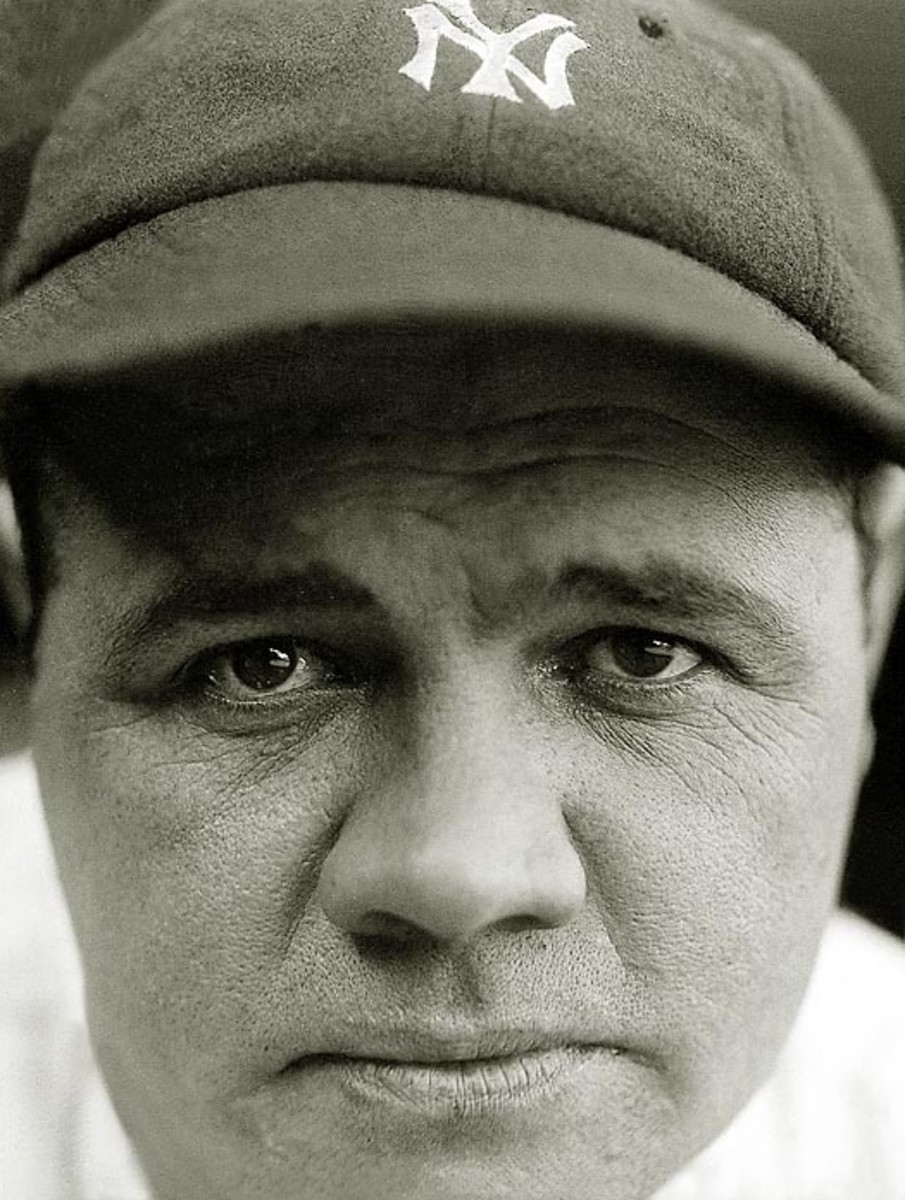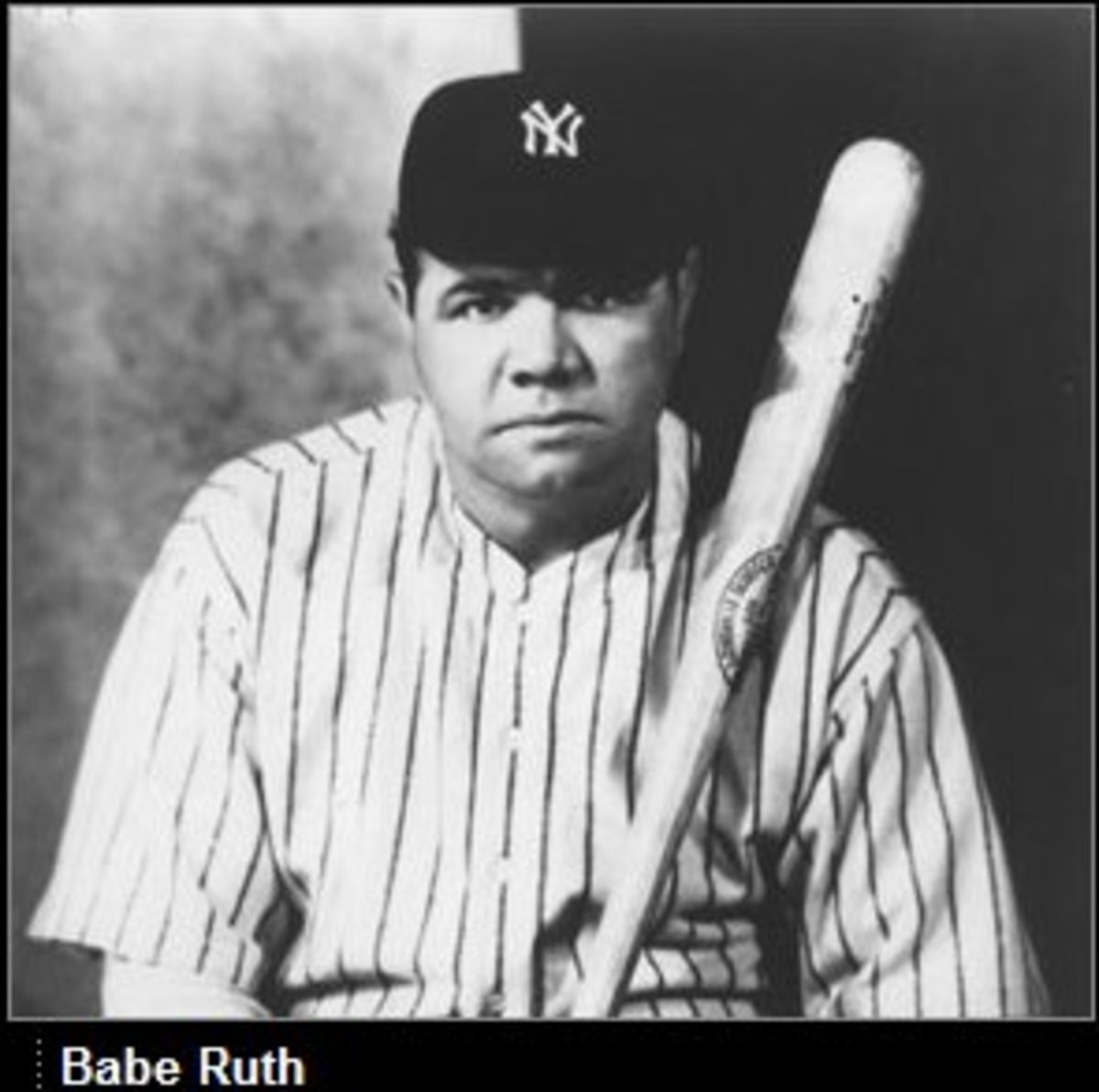- HubPages»
- Sports and Recreation»
- Team Sports»
- Baseball
An Unearthed Film and the Beginning of Babe and Lou
The Babe and Lou Captured in Film
- Baseball Researcher: Some Very Fortunate Footage
A baseball researcher breaks down a video of Babe Ruth in the possession of the University of South Carolina.
June 1, 1925: A Special Moment in Time
Does the date June 1, 1925 mean anything to you? For many baseball fans, it does.
A friend of mine recently posted a link on Facebook to a fascinating story by baseball researcher Tom Shieber (technically, since his website is Baseball Researcher, I guess he’d be THE baseball researcher).
Shieber investigated an outtake from Fox Movietone News of a Yankees-Senators game labeled June 1, 1925. He concluded that it was, indeed, from this game. He even narrowed down the at bat shown in the clip.
As it turns out, this is a game I was starting to write about for my book in progress. I wrote a few hundred words or so and planned to do more research. Although drawn to the game initially because of the pitching matchup, when I recalled its importance in the big picture, I wrote about Babe Ruth and Lou Gehrig.
That’s right – this video is of the Babe and Lou. It’s actually of the Babe. Lou just happens to be in the background. Even though he stayed in Ruth’s shadow, he wasn’t going to stay a nameless face in the background for long.
The following is a modified version of my previously written portion of the essay for the book.
Babe Ruth
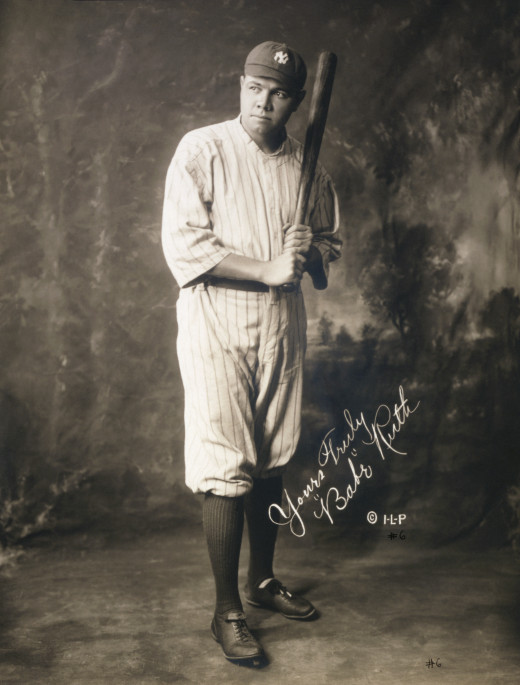
Ruth's Return
The two primary storylines in the 1925 Yankees’ season came together on this date and the team would never be the same.
Babe Ruth had missed all of April and May with what became known as the Bellyache Heard Round the World.
This clearly was not to be the Yanks’ year. Without Ruth, the team was off to a 15-25 start, already 13 ½ games behind and 1 ½ games ahead of the last-place Red Sox. Even with his return on June 1, the team would get no closer than 11 ½ games behind and sink further and further behind the leaders.
Ruth would put up respectable numbers – for anyone else. He hit 25 homers, drove in 66 runs and batted .290 in 98 games. At the age of 30, critics wondered if he was already in a decline phase. But least the team had its drawing card back – and still with plenty of power – for the rest of the season.
But June 1 also began a new era with the first day of Lou Gehrig’s 2,130 consecutive games played. From here on in, Babe Ruth would never appear in a Yankees’ boxscore without Gehrig.
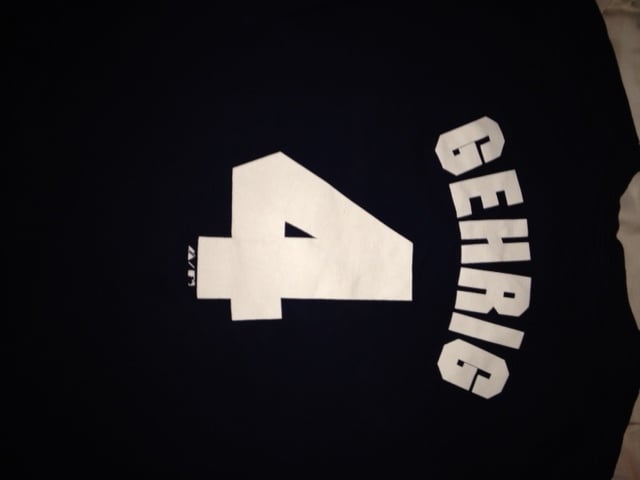
Gehrig's Path Blocked
Gehrig’s becoming a star in New York shouldn’t have been a surprise to veterans of the city’s sports scene. He was a homegrown talent who excelled in a city high school, hitting a legendary home run in a contest at Wrigley Field. And he was seriously sought after while a collegian playing at Columbia. While enrolled, he was illegally recruited to a minor league team by John McGraw in 1921.
Two years later, he was legally back in the minors. He hit .344 with massive power in the minors (54 doubles, 23 triples and 61 homers in 205 games), and played very well in two brief call-ups in 1923 and 1924.
Called up for good, Gehrig was off to a slow start in 1925, batting just .174 in 26 plate appearances without a homer and with one RBI, but an even bigger obstacle loomed.
Wally Pipp had been the team’s everyday first baseman since the first game of 1915, and he very rarely missed a game. Pipp was, by ordinary standards, an iron man. He missed 18 games in 1915, mostly in the middle of July, and 35 due to the work-or-fight order in 1918. He missed only 19 games in his other eight-plus years with the team, none of them in 1925.
He led the league in triples one time and home runs twice, the first Yankee to lead in that category, and was arguably the best hitter in team history, not counting Ruth. His fielding was also top-notch.
He was just 32 and coming off back-to-back 100 RBI seasons. But he was struggling at this point, hitting .244 with 3 HR and 23 RBI.
Still, Pipp was the team’s all-time leader in games, plate appearances, at bats, runs, hits, doubles, triples, RBI and sacrifices. He led most of these categories by wide margins. He entered the year second in homers to Ruth, but was passed by Bob Meusel during the course of the season. He was third in walks, behind Ruth and Roger Peckinpaugh.
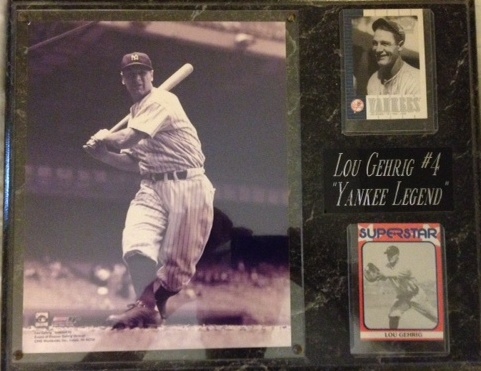
Gehrig’s Slow Rise
Gehrig actually technically batted cleanup behind Ruth in his debut – as a late replacement for Pipp in a 10-0 blowout of the Browns on June 15, 1923. He did not come to the plate. He didn’t bat until his third game, on June 18, pinch-hitting in the sixth spot for Aaron Ward. Ruth batted third in that one, too.
In his fourth game, Gehrig pinch-hit in the fourth spot, behind Ruth. However, Ruth might have been out of the game by that point. The play-by-play is not available, but the boxscore leads us to believe Ruth was still in. Gehrig had his first hit in his fifth game, July 7, while pinch-hitting. It was the first time both players had a hit in a game.
Gehrig didn’t get a start until Sept. 27, his 10th game. He was slotted in Pipp’s usual fourth spot, behind Ruth. The significance of his batting cleanup can’t be looked at the way we look at cleanup hitters. After all, very few teams in 1923 had any players capable of cleaning up the bases as we think of it. In fact, Gehrig may be the guy who really created the position. At the conclusion of the 1925 campaign, Ken Williams was the all-time leader in cleanup homers with 99. Although several players were ahead of him for the next few years, Gehrig was first to clear 200 homers as a cleanup hitter in 1933.
Oh, and finally given a chance to bat fourth behind Ruth, what did Gehrig do? He homered (his first) and walked twice (his first). The next day, the duo destroyed the Red Sox at Fenway. Ruth went 5-for-6 with a homer, double, walk, four runs and three RBI. And the 20-year-old kid at first base? He went 4-for-7 with three doubles, three runs and four RBI. Instant protection for Ruth.
The youngster had a pair of two-hit games in a doubleheader on the 29th, then sat the rest of the season. But that ridiculous final four games he played in obviously made it clear that Gehrig was an option. His 24 homers and .304 average in 59 minor league games in 1923 was no fluke.
Of course, Pipp hit .304 as a full-time major leaguer and drove in 108 runs, so it was his job to lose. And he didn’t lose it, picking up pace in 1924. Pipp hit .295 with 114 RBI, 12 steals and 88 runs. Gehrig didn’t get into a game until Aug. 31, and in his 10 games did not make a single start. He actually replaced Ruth in right field once, going 2-for-3. He was 6-for-12 on the season.
But Gehrig hit 40 doubles, 37 homers and batted .369 in the minors in 1924. As great as Pipp was, there was no use keeping the kid in the minors any longer.
Walter Johnson
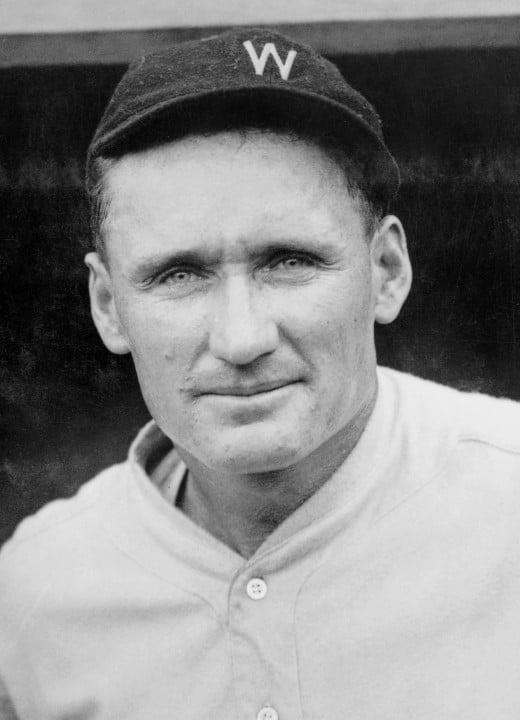
The Game
There’s no play-by-play available for the game from my usual sources. Ruth batted fourth this time and Pipp sixth. Ruth went 0-for-2 and walked before being replaced with Bobby Veach, a huge star with the Tigers in the 1910s, now a reserve playing in his final season. Pipp played at first the entire game, going 1-for-4.
Pee-Wee Wanninger, the Yankee shortstop, was batting leadoff. He went 0-for-3 with a strikeout. The Yankees sent Gehrig to hit for him the final time through the lineup. The teams each scored a run in the fourth, then Washington added three in the seventh. Gehrig faced either Walter Johnson or Firpo Marberry in the eighth, failing to reach. Hall of Fame pitcher Waite Hoyt replaced him to pitch the ninth, allowing another run.
The Yanks managed two in the ninth off Marberry, but came up short. Hall of Fame outfielder Sam Rice went 5-for-5 for Washington, a team that would go on to successfully defend its league title.
Shortstop Ernie Johnson, who came off the bench to take the lineup spot of starting pitcher Sad Sam Jones, homered for the Yanks. It was the first of five in his final season.
New York lost its fifth in a row, with Jones dropping to 5-6. Jones, a member of the great Red Sox teams of the late 1910s and a two-time 20-game winner, would go on to put up career worsts with 21 losses and a 4.63 ERA in 1925. The latter number would be “topped” in 1926, but Jones had several years left and would end up with 229 career wins.
Hoyt also had a high ERA at the time, and lowered it only to 4.00 by the end of the year. Like Jones, this big-time pitcher had a losing record without the full-bore Babe Ruth.
Johnson improved to 8-2, picking up his 385th career victory on the way to his last 20-win season.
Ruth and Gehrig
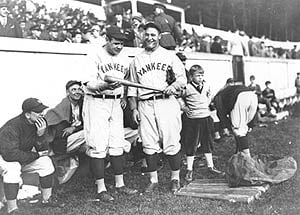
Babe and Lou, Together At Last
For whatever reason, when Pipp asked to sit out the next day, it was a turning point. Gehrig went 3-for-5 with a double and run. Perhaps it was enough to convince the brass that the young guy was ready. He started the next two games, and although he was hitless and taken out both times, he remained the starting player. He didn’t miss a start until July 5, the day after a doubleheader in which he struck out five times.
Pipp would become the backup for the rest of the year, getting into 20 games, almost all as a pinch-hitter. He had just one run and one hit left in his Yankee career.
Over the final 114 games, Gehrig played all of them and started 112. The team was just 54-59, but the new first baseman would hit .303 in that stretch with 20 homers and 67 RBI – similar numbers to the Babe. He was fifth in homers in the league and third on the team.
In 1926, with Ruth healthy and Gehrig firmly established, the legend really took off. The team won three straight pennants, then another in 1932. The other seasons weren’t exactly shabby, either. The team won 88 games in 1929, 86 in 1930 and 94 in 1931. In the final two seasons of the Babe and Lou Show, they won 91 and 94.
Even if you count 1925, in which both members of the pair missed two months, the average season for the Babe and Lou while together reads like the stats of a player in an unrealistic video game. Imagine an MVP-worthy season on average every year for 10 years for two players on the same team.
Babe & Lou: Average Production
1925-1934
| Runs
| Hits
| Homers
| RBI
| Walks
| AVG
|
|---|---|---|---|---|---|---|
Ruth
| 124
| 161
| 41
| 132
| 116
| .338
|
Gehrig
| 133
| 195
| 35
| 144
| 100
| .343
|
1926-1934
| ||||||
Ruth
| 131
| 167
| 44
| 140
| 122
| .342
|
Gehrig
| 140
| 202
| 36
| 152
| 106
| .347
|
The average numbers put up by Babe Ruth and Lou Gehrig during their time together.
The Greatest Duo?
Who do you think was the greatest duo in baseball history?
Even if you take into account the era and the park, these numbers amount to about what they would be like today. Toss in plenty of doubles and triples, a bunch of steals and all that Ruth did before (the heart of six pennant winners) and Gehrig did after (the heart of three) and you get a glimpse of how amazing this pair was.
So to get a glimpse, however accidental, of the start of this special duo’s decade of dominance is really, really special.

